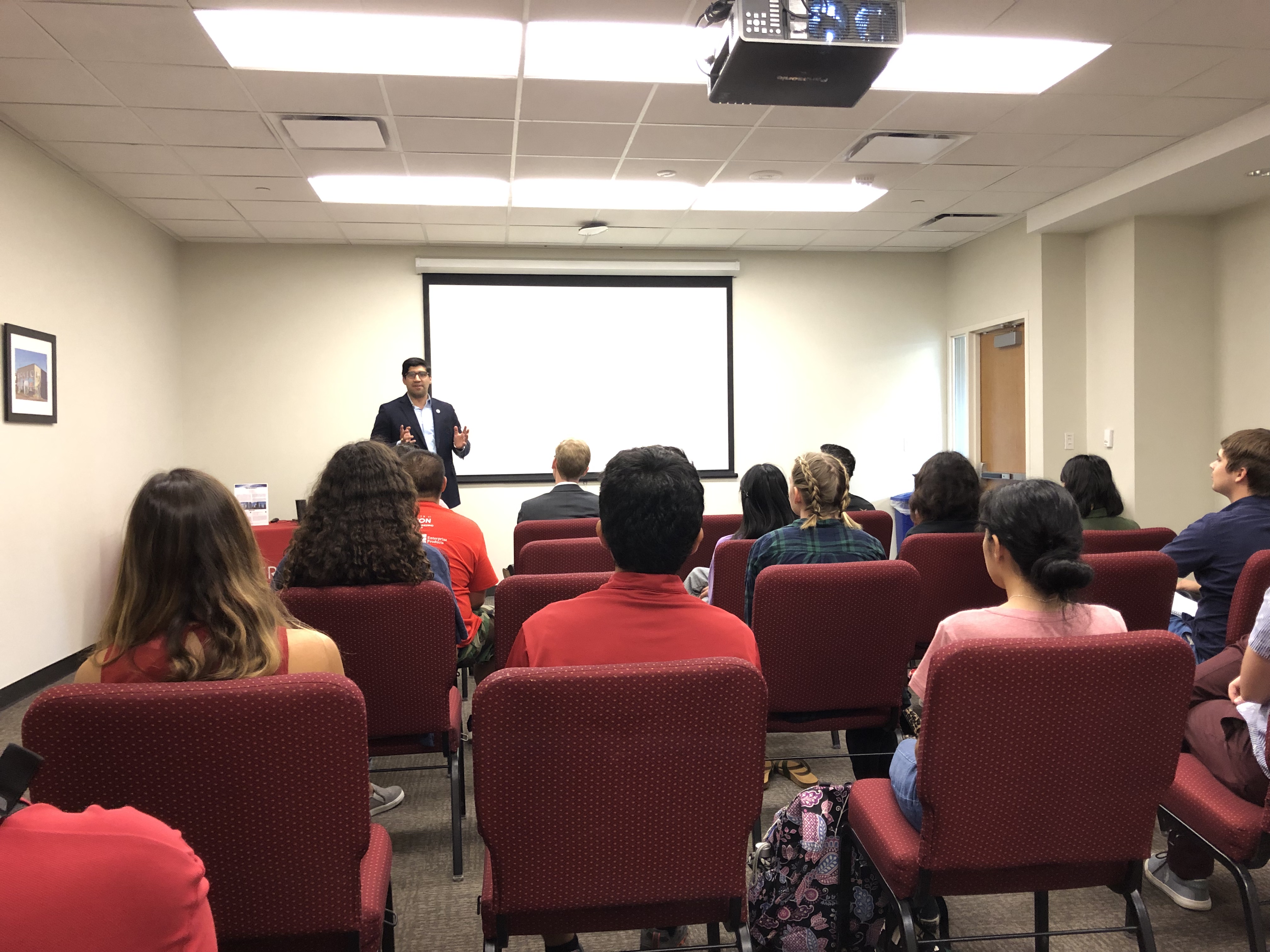
On Thursday September 12th, the University of Houston Office of Sustainability hosted Texas Central as the first guest in the Fall 2019 Sustainability Meetup Series. Texas Central is the company undertaking the development, design, construction, finance, and operation of the innovative new high-speed passenger train to be built in Texas. Based on the “bullet trains” of Japan, this “Texas Sized” Shinkansen will be able to take you from Houston to Dallas in less than 90 minutes. The rail line’s construction represents a big step towards a sustainable future for Texas and sets the president for similar projects to happen around the country.
One of the most obvious sustainability related impacts from the train will be a reduction in emissions for Texas. The rail will be 100% electric and reperesent the largest electric vehicle in the state. “The rail will be getting 14,600 cars of the road per day… and has one twelfth the emissions of a commercial jet.” Said Mac Flores, the representative for Texas Central. Given that many professional Texans travel from Houston to Dallas multiple times per week, and that their only viable options at this time are to either fly or drive, the rails low emissions and offset of cars represents a major victory for future Texas air quality.
Furthermore, the rail will be built for minimal environmental impact through strategic elevations and other strategies. “The surrounding environment is very important to this project”, said Flores “the Draft of our Environmental Impact Statement took over 4 years to complete and was approved by over 19 Federal agencies. We are expecting to get a Final Environmental Impact Assessment by the beginning of next year.”
Transportation thoroughfares like roads and highways represent major barriers to wildlife around the world because they are deadly to cross and often reshape landscape as they are built. The Texas high-speed rail, however, will be elevated enough to let wildlife pass beneath it safely along with other room for conservation work. For example, the rail will have silt fences and straw bales installed to minimize runoff into any nearby bodies of water, wetlands, roads or other sensitive areas, in addition to employing local vegetation to prevent soil erosion.
Once the rail begins construction, the project will take an estimated five to six years to complete and will generate ten thousand jobs per year. Tickets will be competitively priced and will represent one of the most sustainable and efficient modes of travel in Texas, if not the world.
You can find out more regarding Texas’ high-speed rail by visiting Texas Central’s webpage. Join the Office of Sustainability for the next Sustainability Meetup, Buddhism and Sustainability, coming up on October 3rd.
